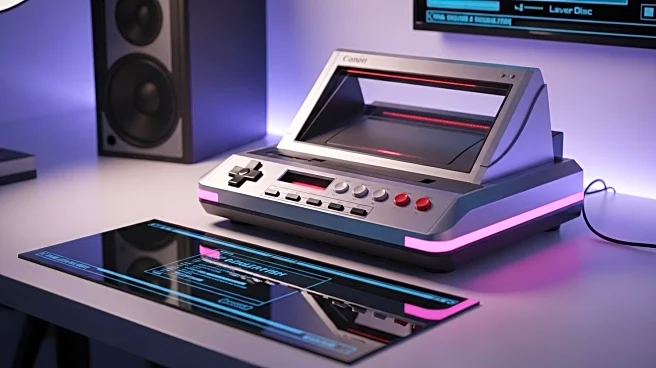What's Happening?
A rare gaming console from the 1990s, the Pioneer LaserActive, has become playable on PCs for the first time through the release of Ares v146 emulator. The LaserActive, launched in 1994, was a LaserDisc player with modules for Sega Genesis and NEC TurboGrafx-16 games. It featured unique Mega LD titles combining game data with analog video. Despite its innovative design, the console was expensive, costing $970 for the base unit and $600 for add-ons, with games priced at $120. Its high cost and limited software led to modest sales, estimated at 10,000 units globally. The new emulator, developed by a coder known as Nemesis, allows broader access to these games, previously only playable on original hardware.
Why It's Important?
The development of the LaserActive emulator marks a significant advancement in preserving gaming history. It enables enthusiasts and researchers to explore and experience a unique part of gaming culture that was previously inaccessible due to hardware limitations. This development highlights the importance of emulation in maintaining digital heritage, offering insights into the technological and creative innovations of the 1990s. The emulator also caters to a niche community of retro gaming fans, potentially revitalizing interest in LaserActive titles and similar vintage gaming formats.
What's Next?
The release of the LaserActive emulator may inspire further development in retro gaming emulation, encouraging coders to tackle other obscure or complex systems. It could lead to increased interest in collecting and preserving LaserActive hardware and software, as enthusiasts seek to experience the original format. The emulator's success might prompt discussions on the legal and ethical aspects of emulation, particularly concerning intellectual property rights and the preservation of digital media.
Beyond the Headlines
The LaserActive emulator's creation underscores the dedication and passion within the retro gaming community. It reflects broader cultural trends towards nostalgia and the appreciation of vintage technology. This development may influence how gaming history is curated and shared, emphasizing the role of community-driven projects in preserving digital culture. Additionally, it raises questions about the sustainability of digital preservation efforts and the resources required to maintain access to obsolete technologies.











